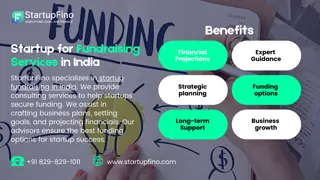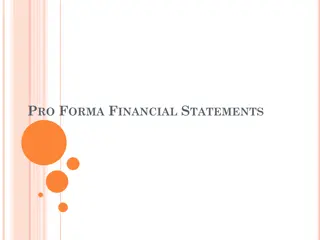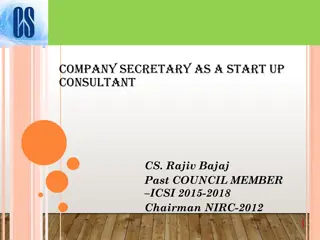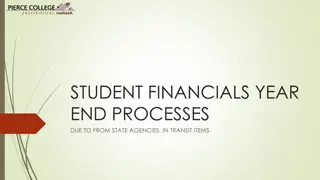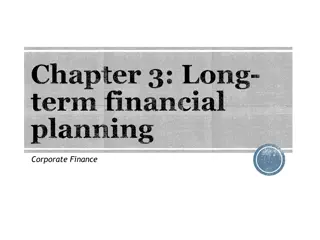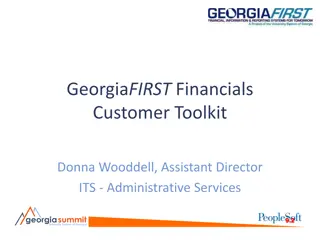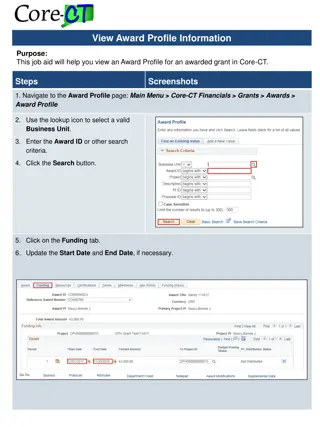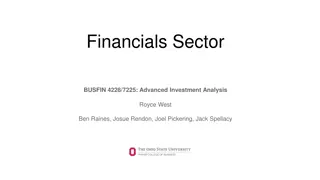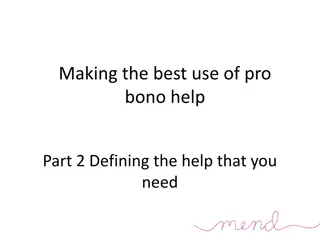Developing Pro Forma Financials for Startups - Insights from Chad Eames
BA Economics and MBA Finance/Management graduate, Chad Eames has over 12 years of experience supporting entrepreneurship in tech startups. He has assisted over 70 companies in obtaining funding and now works as an entrepreneur, artist, and consultant. Learn about the importance of pro formas in telling the story of a company's operations and growth.
Download Presentation

Please find below an Image/Link to download the presentation.
The content on the website is provided AS IS for your information and personal use only. It may not be sold, licensed, or shared on other websites without obtaining consent from the author.If you encounter any issues during the download, it is possible that the publisher has removed the file from their server.
You are allowed to download the files provided on this website for personal or commercial use, subject to the condition that they are used lawfully. All files are the property of their respective owners.
The content on the website is provided AS IS for your information and personal use only. It may not be sold, licensed, or shared on other websites without obtaining consent from the author.
E N D
Presentation Transcript
DEVELOPING PRO FORMA FINANCIALS FOR STARTUPS CHAD EAMES
ABOUT ME BA Economics, Emory University MBA Finance/Management, University of Kentucky 12+ years working with tech startups and statewide programs to support entrepreneurship Assisted over 70 KY companies in obtaining over $50 million in total funding Worked with hundreds of other KY startups, small businesses, and entrepreneurs Now I m an entrepreneur, artist, and consultant
PRO FORMAS Tell the story of your company s first (or next) 3-5 years of operations Range in complexity from relatively simple to WTF? Are forward looking and use assumptions and educated guesses about income, expenses, current activity, future activities, etc. Often include multiple versions expected, conservative, and optimistic scenarios Require research - market, industry, costs, competition, customers, user feedback, etc. Demonstrate how well you know your business Will almost always be completely wrong (But that doesn t mean they aren t important!)
LOTS OF INFORMATION TO CONSIDER Market size, market growth, addressable market, customers, units sold, unit price, cost of good sold, facility costs, equipment costs, materials, employees, contractors, research & development, salaries, marketing, regulatory costs, overhead expenses, grants, equity investment, loans, debt service, and pretty much anything and everything else related to your business. THEN, you must consider how to present all this information for your specific audience. For example, the level of detail is usually more condensed for a pitch deck than for a business plan ( roll up your expense categories to be more general; use annual numbers rather than quarterly or monthly numbers).
A FEW MORE COMMENTS ON PRO FORMAS They will expand and grow in detail and complexity as your business grows and as you learn more about your industry and operations. They MUST be clear, logical, informed, justified, dynamic, complete, realistic, and understandable. The process is essentially the same regardless of the type of business. There may be differences in the income & expense categories and the way you choose to display the results (for example, using COGS might make sense for one type of business, but not for another). They do not have to follow any strict format, but they do have to make sense. Good first step toward developing the three standard financial statements
TODAYS EXAMPLE Chad Eames WoodWorks My woodturning business (www.chadeames.com) Currently operating out of my home Selling online and at art fairs and home d cor shows Would like to expand into a separate facility and Offer group and private lessons Have a retail gallery Do remote demonstrations for woodturning groups Produce instructional video content First time running these numbers, so I m in a position similar to all of you





